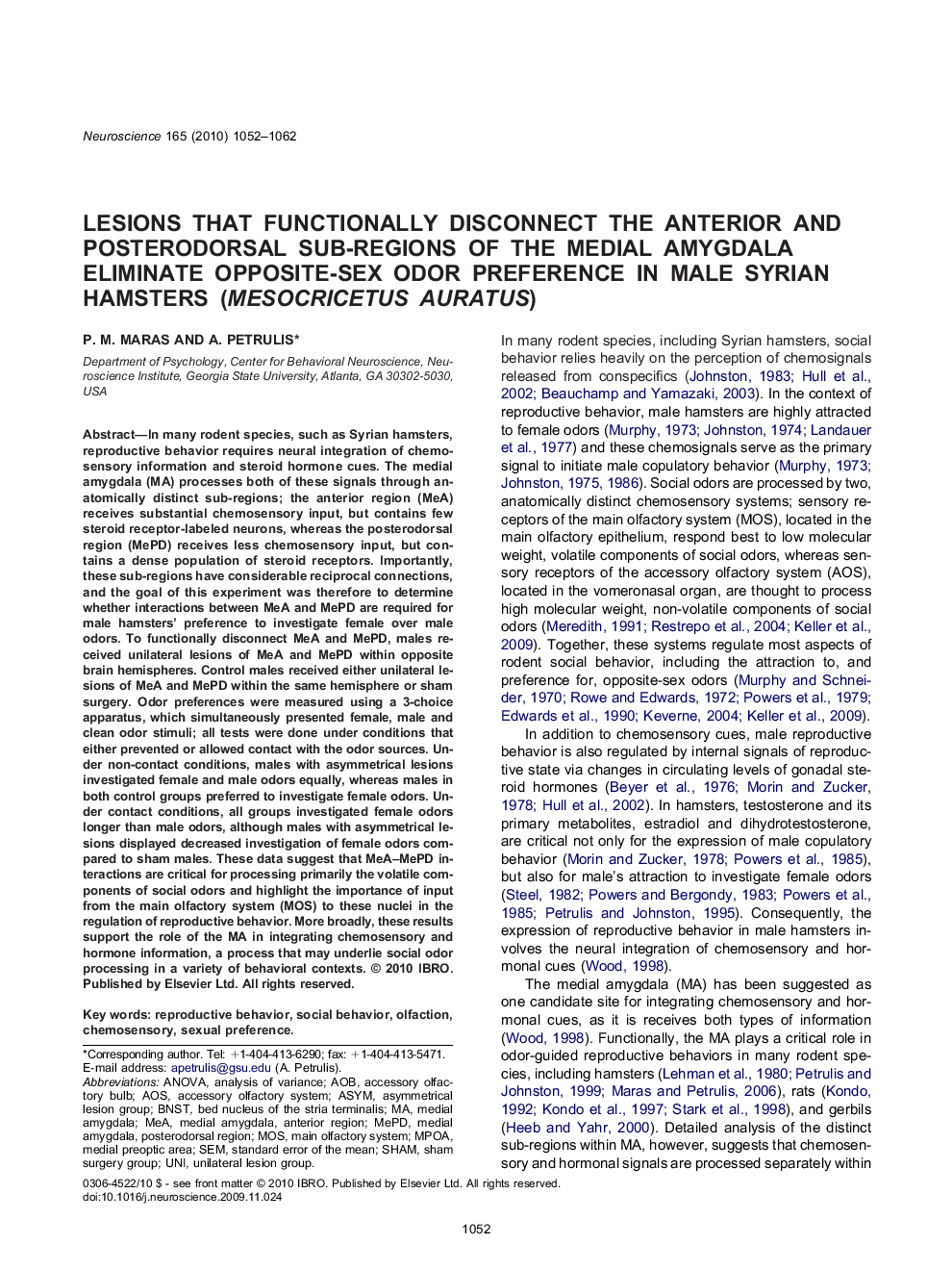| کد مقاله | کد نشریه | سال انتشار | مقاله انگلیسی | نسخه تمام متن |
|---|---|---|---|---|
| 6277271 | 1295754 | 2010 | 11 صفحه PDF | دانلود رایگان |
عنوان انگلیسی مقاله ISI
Lesions that functionally disconnect the anterior and posterodorsal sub-regions of the medial amygdala eliminate opposite-sex odor preference in male Syrian hamsters (Mesocricetus auratus)
دانلود مقاله + سفارش ترجمه
دانلود مقاله ISI انگلیسی
رایگان برای ایرانیان
کلمات کلیدی
UniMePDASYMMOSMPOABNSTMEAAOBmedial amygdala - آمدیگدال medialAOS - بهolfaction - بویاییanalysis of variance - تحلیل واریانسANOVA - تحلیل واریانس Analysis of varianceSexual preference - ترجیح جنسیstandard error of the mean - خطای استاندارد میانگینsocial behavior - رفتار اجتماعیreproductive behavior - رفتار باروریmain olfactory system - سیستم بویایی اصلیaccessory olfactory system - سیستم بویایی لوازم جانبیSham - شامaccessory olfactory bulb - لامپ متلاشی کننده لوازم جانبیSEM - مدل معادلات ساختاری / میکروسکوپ الکترونی روبشیmedial preoptic area - منطقه پیشوپتیک مدیاbed nucleus of the stria terminalis - هسته تخت ترمینال های استریChemosensory - چموسنسوری
موضوعات مرتبط
علوم زیستی و بیوفناوری
علم عصب شناسی
علوم اعصاب (عمومی)
پیش نمایش صفحه اول مقاله

چکیده انگلیسی
In many rodent species, such as Syrian hamsters, reproductive behavior requires neural integration of chemosensory information and steroid hormone cues. The medial amygdala (MA) processes both of these signals through anatomically distinct sub-regions; the anterior region (MeA) receives substantial chemosensory input, but contains few steroid receptor-labeled neurons, whereas the posterodorsal region (MePD) receives less chemosensory input, but contains a dense population of steroid receptors. Importantly, these sub-regions have considerable reciprocal connections, and the goal of this experiment was therefore to determine whether interactions between MeA and MePD are required for male hamsters' preference to investigate female over male odors. To functionally disconnect MeA and MePD, males received unilateral lesions of MeA and MePD within opposite brain hemispheres. Control males received either unilateral lesions of MeA and MePD within the same hemisphere or sham surgery. Odor preferences were measured using a 3-choice apparatus, which simultaneously presented female, male and clean odor stimuli; all tests were done under conditions that either prevented or allowed contact with the odor sources. Under non-contact conditions, males with asymmetrical lesions investigated female and male odors equally, whereas males in both control groups preferred to investigate female odors. Under contact conditions, all groups investigated female odors longer than male odors, although males with asymmetrical lesions displayed decreased investigation of female odors compared to sham males. These data suggest that MeA-MePD interactions are critical for processing primarily the volatile components of social odors and highlight the importance of input from the main olfactory system (MOS) to these nuclei in the regulation of reproductive behavior. More broadly, these results support the role of the MA in integrating chemosensory and hormone information, a process that may underlie social odor processing in a variety of behavioral contexts.
ناشر
Database: Elsevier - ScienceDirect (ساینس دایرکت)
Journal: Neuroscience - Volume 165, Issue 4, 17 February 2010, Pages 1052-1062
Journal: Neuroscience - Volume 165, Issue 4, 17 February 2010, Pages 1052-1062
نویسندگان
P.M. Maras, A. Petrulis,